
- Shanghai Vcycletech Co., Limited
- Bactericidal Algicide Coagulants And Flocculants Swimming Pool Chemicals
Home> Technical Article> Investigation and study of commonly used biocides for industrial water treatment

Investigation and study of commonly used biocides for industrial water treatment
2021-09-08 18:17:06Investigation and study of commonly used biocides for industrial water treatment
I. Application background overview
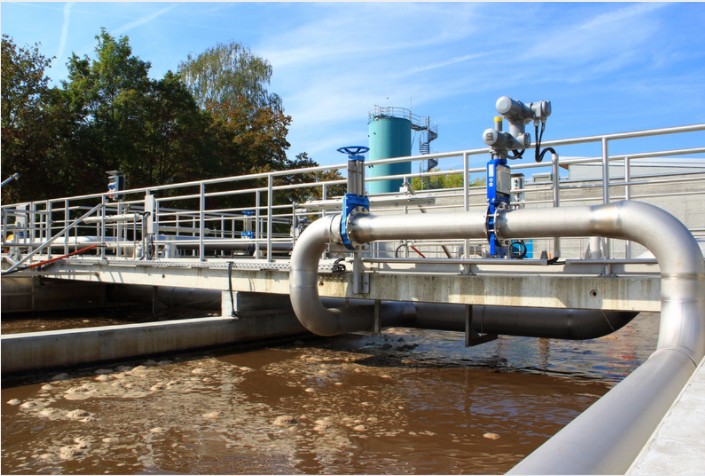
Industrial circulating cooling water systems are often prone to problems such as scaling, corrosion, and slime. Slime problem mainly refers to the heat exchanger and other viscous dirt attached to the inner wall, mainly by bacteria, algae, and other microbial secretion products while adhering to the water suspended impurities and formed. The consequences of biological slime, like scaling, can affect heat transfer, clog the tube, cause local corrosion, and other hazards. Suppose the microorganisms are not controlled and allowed to multiply. In that case, the resulting slime will block the heat exchanger and bring great harm to the system operation. Currently, the most widely used and effective microbial control method for the chemical method, that is, in the circulating cooling water system by adding biocides to control the propagation of microorganisms in the design, water treatment biocides, also known as bactericides and algaecides, sludge strippers or anti-sludge agent, a class of chemicals that can inhibit the growth of bacteria and algae and microorganisms in the water to prevent the formation of microbial slime, causing harm to the system.
2. the common biocides resource overview
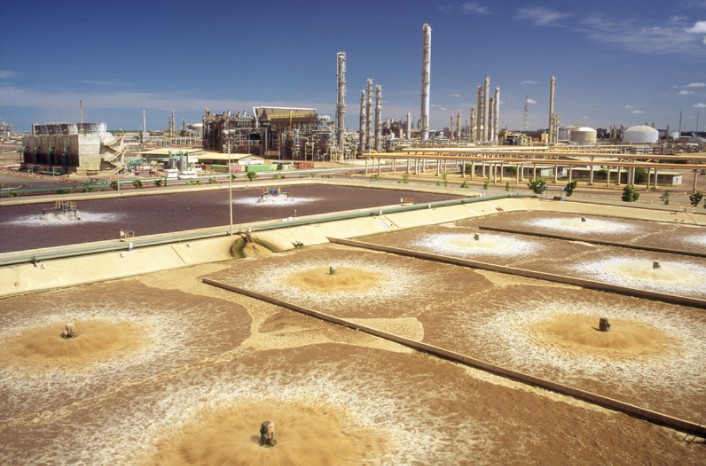
Currently, the biocides commonly used in industrial water treatment can be divided into two categories. One is oxidizing biocides, a solid oxidizing biocide, usually a solid oxidizing agent. The pernicious effect of microorganisms in the water is vital. The oxidizing biocides commonly used in circulating cooling water systems are chlorine-containing, peroxides, bromine-containing, and other oxidizing properties. These compounds generally have the advantages of fast sterilization and algae control, high broad-spectrum biocidal effect, low treatment cost, relatively muted impact on environmental pollution, and less resistance to microorganisms. The disadvantage is that it is affected by organic substances and reducing substances in the water, short duration of the agent, the pH of the water is also affected, at the same time, the dispersion penetration and stripping effect is poor; another type of non-oxidizing bactericides, non-oxidizing algaecides are not to kill microorganisms by oxidation, but to poison the unique parts of the organisms, therefore, it is not affected by reducing substances in the water. Non-oxidizing algaecides have a certain persistence of biocidal effect, sediment or slime penetration, stripping effect, less affected by hydrogen sulfide, ammonia, and other reducing substances, less affected by the pH of the water. Still, the treatment cost is relatively high compared to oxidizing algaecides, easy to cause environmental pollution. The microorganisms in the water are susceptible to drug resistance. The following is a classification of its introduction.
1, oxidizing bactericides
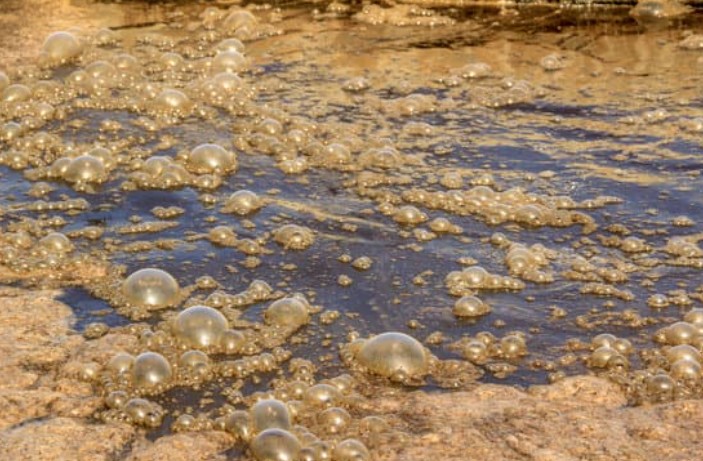
① chlorine-containing compounds
Chlorine-containing compounds have three main bactericidal effects: ① chlorine in the water to generate molecular hypochlorous acid, hypochlorous acid is a tiny neutral molecule, it can diffuse to the surface of negatively charged bacteria, and through the cell wall penetrate to the interior of the bacterium to play an oxidizing role, destroy the bacterial phosphate dehydrogenase, the imbalance of sugar metabolism and cause bacterial death; ② the part of new ecological oxygen, the formation of fresh ecological oxygen by the decomposition of hypochlorous acid, the bacterium will (3) Chlorination, chlorine binds to cell membrane proteins to form nitrogen and chlorine compounds, which interfere with cell metabolism and eventually cause bacterial death. When the pH is more significant than 7.5, HClO will accelerate ionization: NClO = H+ +ClO-, and the bactericidal rate of hypochlorite ClO- is only one-twentieth of that of hypochlorite. The higher the proportion of chlorine added to the water in hypochlorite, the better the bactericidal effect.
Ozone
Ozone is a potent oxidizing agent and has been widely used in circulating cooling water treatment. Ozone relies on its strong oxidizing properties to kill bacteria and microorganisms by oxidizing enzymes in microorganisms. The disadvantage is that the oxygenation capacity is so strong that almost no corrosion inhibitor and scale inhibitor can match it. It needs to occur on-site, resulting in high costs.
③Bromine and bromine compounds
Bromine and bromine compounds are faster than chlorine: the survival rate of bacteria is reduced to 0.0001% within 4 minutes. The corrosion is 2-4 times lower than chlorine, and metal corrosion is 2-4 times higher than bromine at pH 8.2 at the same dose. The sterilization mechanism is similar to liquid chlorine: Br+H2O=HBr+HbrO hypobromous acid HBrO interacts with intracellular proteins, thus destroying the protein structure to achieve sterilization. The activity of hypobromous acid is much higher than hypochlorous acid, which is why bromine fungicides are better than chlorine fungicides.
Peroxyacetic acid
Peroxyacetic acid, also known as peracetic acid, is one of the more prominent bactericides among all chemical fungicides and is extremely unstable and explosive in pure form. The bactericidal principle of peroxyacetic acid is twofold: 1) it relies on powerful oxidation to inactivate enzymes and cause microbial death; 2) it damages microorganisms by changing cell pH.
2、Non-oxidizing fungicides
①Chlorophenols and their derivatives
Chlorophenols and their derivatives are a class of non-oxidizing algaecides. Their algaecidal ability is enhanced by the introduction of chlorine atoms into the molecular structure of phenols. These compounds are not readily degradable and are toxic to aquatic organisms and mammals, so the pollution problem must be given sufficient attention. Chlorophenols are not suitable for use with cationic agents (e.g., quaternary ammonium salts). Still, when used in combination with certain anionic surfactants, they can significantly reduce the dosage and improve the biocidal effect. The bactericidal mechanism of chlorophenols and their derivatives: Chlorophenols can be adsorbed on the cell wall of microorganisms and then diffuse into the cell structure, generating a colloidal solution in the cell, causing protein precipitation and thus destroying the protein to kill bacteria. Commonly used types include dichlorophenol, pentachlorophenol, sodium pentachlorophenol, etc.
②Quaternary ammonium compounds
Quaternary ammonium compounds are cationic surfactants. Quaternary ammonium fungicides are bacteriostatic at low concentrations. They can kill most types of bacterial propagules and some viruses at higher concentrations. The inhibition of enzymatic systems by quaternary ammonium biocides is reversible, which explains their inhibition. Still, the reversibility of this enzyme inhibition gradually decreases with time and eventually becomes irreversible. Because of the intense surface activity of quaternary ammonium disinfectants, it is difficult to remove them from the bacterium's surface. Chemical neutralizers are usually used, such as 1227, 1427, and 1631.
The bactericidal mechanism of quaternary ammonium compounds has the following four points: ① change the permeability of the cell, water into the bacterium swelling and rupture; ② has good surface activity, can be highly aggregated on the surface of the bacterium, affecting the metabolism of bacteria; ③ into the interior of the cell, so that the cell enzymes blunt, protein enzymes can not be produced, so that protein denaturation; ④ inactivate the dehydrogenase, oxidase, and can break down the glucose, glucose, pyruvate, pyruvate, pyruvate, etc. (4) Inactivate dehydrogenase, oxidase, and enzyme systems that break down glucose, ambulate, pyruvate, etc., thus preventing bacterial respiration and glycolysis.
(3) Quaternary phosphate compounds
The development of quaternary phosphate salts is a new direction of algaecide research. These compounds have a similar structure to quaternary ammonium salts but with phosphorus cations instead of ammonia cations. It is mainly used in industrial water treatment agents oilfield water treatment, with the advantages of high efficiency, rapid, broad-spectrum, low toxicity to the environment, fish, easy biodegradation and easy to use, etc., the shortcomings are the higher cost, some compounds have low water solubility [4]. Industrial water treatment agents commonly used are tetramethyl phosphonium chloride, tetrahydroxyalkyl phosphonium sulfate, and tetrahydroxyalkyl phosphonium chloride, effective against Gram-negative and Gram-positive bacteria, as well as molds and algae. Quaternary phosphates are new fungicides that have been developed in the last decade, and their structure is similar to that of quaternary amines. The bactericidal mechanism of quaternary phosphates is mainly through the disruption of bacterial respiration and glycolysis or the denaturation of proteins and the destruction of cell membranes and cell wall structures to achieve the bactericidal effect.
④Thiazole compounds
Commonly used are isothiazolinone, benzisothiazolinone, etc. The killing mechanism of isothiazolinone mainly has three kinds [5]: ① impede the respiration of the bacterium. Most microorganisms rely on respiration to carry out metabolism. Once added in a brief period, isothiazolinone can quickly inhibit cell respiration so that cell growth is immediately stopped. ② Destroy the cell wall. Bactericides can melt the cell wall, disrupting the balance of the internal and external environment of the cell, resulting in the death of bacteria. ③The reactive group of isothiazolinone can react with bases on the nucleic acid to prevent the formation of nucleic acid and destroy the growth and reproduction of the bacterium.
⑤ Organosulfur compounds
Organic sulfur algaecides are commonly used in China, such as dithiocyanomethane and allicin. These algaecides are very effective for fungi, slime forming bacteria, significantly sulfate-reducing bacteria. They have the advantages of low toxicity and easy solubility in water, so they are often used in water treatment systems with strict discharge restrictions and cooling water systems that mainly control slime bacteria [6]. The mechanism of organosulfur algaecides: ① Inhibit the activity of some enzymes, thus interfering with the tricarboxylic acid cycle. It can be metabolized to compounds containing thiocyanic acid (-N=C=S) in the bacteria. The sulfur cyanide can inactivate the sulfhydryl groups (-SH) of amino acids and enzymes in pathogenic bacteria and eventually inhibit the synthesis and function of these substances; (2) it destroys coenzyme A and directly affects the activities of β-oxidation of fatty acids, pyruvate dehydrogenase system and a-ketoglutarate dehydrogenase system, which require the participation of coenzyme A; (3) it inhibits the activities of enzymes with copper and iron as cofactors because these compounds can form chelates with metal ions and interfere with the tricarboxylic acid cycle. (3) Inhibit the activity of enzymes with copper and iron as cofactors because these compounds can form chelates with metal ions and render the enzymes inactive.
(6) Organophosphorus compounds
Organophosphorus fungicides emerged after the 1960s and were initially used in agriculture to control plant pests and diseases and began to be used in large quantities after the 1980s. According to the chemical structure, there are mainly thiophospholipids, phosphoramidites, etc. Because of their high toxicity, their application has been reduced in recent years [7]. The mechanism of action of organophosphorus bactericides and algaecides: (1) act on the -SH group of triphosphate adenosine hydrolase on the cell membrane, thus changing the permeability of the membrane; (2) affect the activity of methyltransferase in the lecithin synthesis process on the cell membrane, which is manifested as the effect on cell wall synthesis. (3) Inhibition of DNA, RNA and protein biosynthesis, and oxygen uptake. 3.3.7 Organic aldehydes Typical product is glutaraldehyde, glutaraldehyde is almost non-toxic, suitable for a wide range of pH, high-temperature resistance, commercial purity of 15 % and 45 % two, 15 % purity of the dosing amount of 100 mg / L, the primary use is to control the growth of bacteria, mold, and algae in water, glutaraldehyde sterilization effect is speedy, an average of 1 ~ 3 hours to sterilize more than 99%, the higher the temperature, The higher the temperature, the better the sterilization effect, is a special agent to kill sulfate-reducing bacteria, itself can be biodegradable. The disadvantage is that the sterilization time is extended, usually up to 10 hours, and can react with ammonium compounds and lose activity [8]. The sterilization principle of glutaraldehyde has four main points: (1) The aldehyde group reacts with the active groups such as amino, imino, and sulfhydryl groups on proteins to kill microorganisms by destroying the proteins. Glutaraldehyde can interact with peptidoglycan in the cell wall of microorganisms, and the higher the peptidoglycan content, the easier it is for glutaraldehyde to kill microorganisms. (3) Glutaraldehyde also interacts with cytoplasmic components and cell membranes, acting on the outer cell membrane, presumably the lipoprotein and globulin layers. ④Altering cell permeability, disrupting enzyme systems and inhibiting the synthesis of DNA, RNA, and proteins.
(7) Organic bromine compounds
Dibromodiazepine propionamide (DBNPA) is a new type of highly effective algaecide and water treatment agent. It has the advantages of high efficiency and broad-spectrum, easy degradation, no residual toxicity, no pollution to the environment, etc. At the same time, it has the functions of multi-effects such as sterilization and algae control, slime removal, and corrosion inhibition [9]. The product has good sterilization performance, does not pollute the environment, and has been widely used in developed countries. Still, little research has been reported on it in China. DBNPA is a broad-spectrum, high-efficiency algaecide that can rapidly penetrate the cell membrane of microorganisms and act on certain protein groups, causing the normal redox of cells to be suspended, thus causing cell death. At the same time, its branches can also selectively brominate or oxidize specific enzyme metabolites of microorganisms, which eventually lead to the end of microorganisms.
(8) Organic Amine Compounds
The mechanism of action of organic amine fungicides is that the lipophilic group of alkyl amine can dissolve the fat on the surface of the bacteria. The most commonly used products are chlorhexidine. Amines also have an excellent synergistic effect with phenols [10]. Amine salts with high molecular weight are often combined with quaternary ammonium salts to obtain better dispersion.
III. Prospects of bioremediation for the treatment of soil mercury pollution
At present, bioremediation technology, as an emerging and high-tech environmental biotechnology, is widely concerned and welcomed by countries all over the world because of the advantages of lower treatment cost, better purification effect, and no secondary pollution, and has been applied to many industrial aspects, such as the treatment of soil pollution, surface water and groundwater purification, industrial waste treatment, etc.; especially in recent years, it has been successfully applied to the treatment of unique environments such as coastal wetlands. In particular, in recent years, there has been significant progress and improvement in the treatment of unique habitats such as coastal wetlands, which are of high ecological quality and economic importance for the protection and development of coastal wetland environments. To achieve sustainable development of human society, solve environmental pollution, and restore the damaged ecological environment, bioremediation technology has obvious superiority and is the preferred technical means globally. For example, the success of phytoremediation technology for heavy metal pollution, bioremediation technology for abandoned mine sites, solid waste resource recovery technology, and ecological bioremediation technology for landfills, etc., all reflect the critical position of bioremediation technology in the world. In conclusion, bioremediation technology has a reasonable prospect of development globally, and countries all over the world attach great importance to the research and application of this technology. In recent years, bioremediation technology has been developed and progressed to a certain extent by absorbing, learning from, and adopting the successful and failed experiences of the previous studies, but this is not enough.
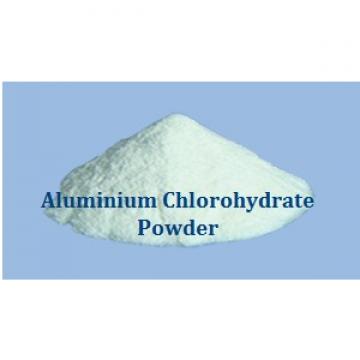 High Economic Effect ACH - Aluminum Chlorohydrate For Water Treatment
High Economic Effect ACH - Aluminum Chlorohydrate For Water Treatment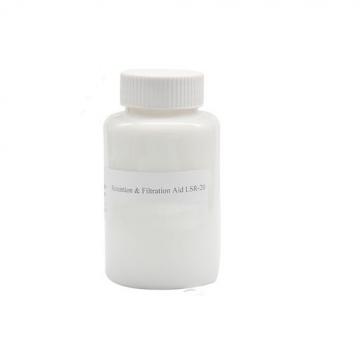 High Retention Rate Retention And Filtration For Corrugated Paper/ Cardboard Paper
High Retention Rate Retention And Filtration For Corrugated Paper/ Cardboard Paper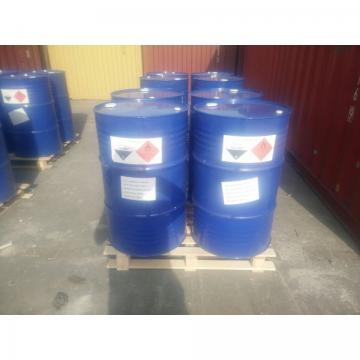 Liquid CAS NO.: 108-91-8 Cyclohexylamine For Boiler Water Treatment
Liquid CAS NO.: 108-91-8 Cyclohexylamine For Boiler Water Treatment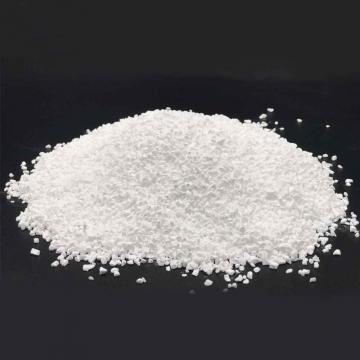 Sodium Dichloroisocyanurate (SDIC) CAS No.:2893-78-9 for Swimming Pool Sterilization
Sodium Dichloroisocyanurate (SDIC) CAS No.:2893-78-9 for Swimming Pool Sterilization